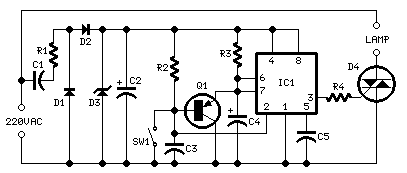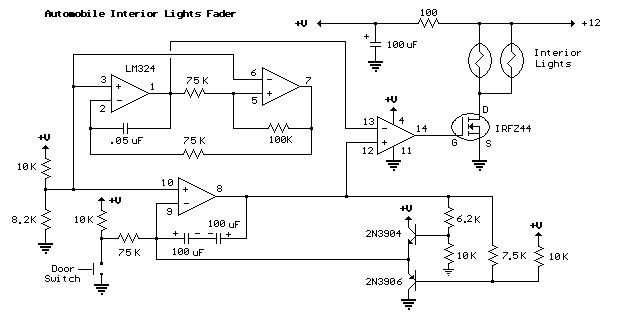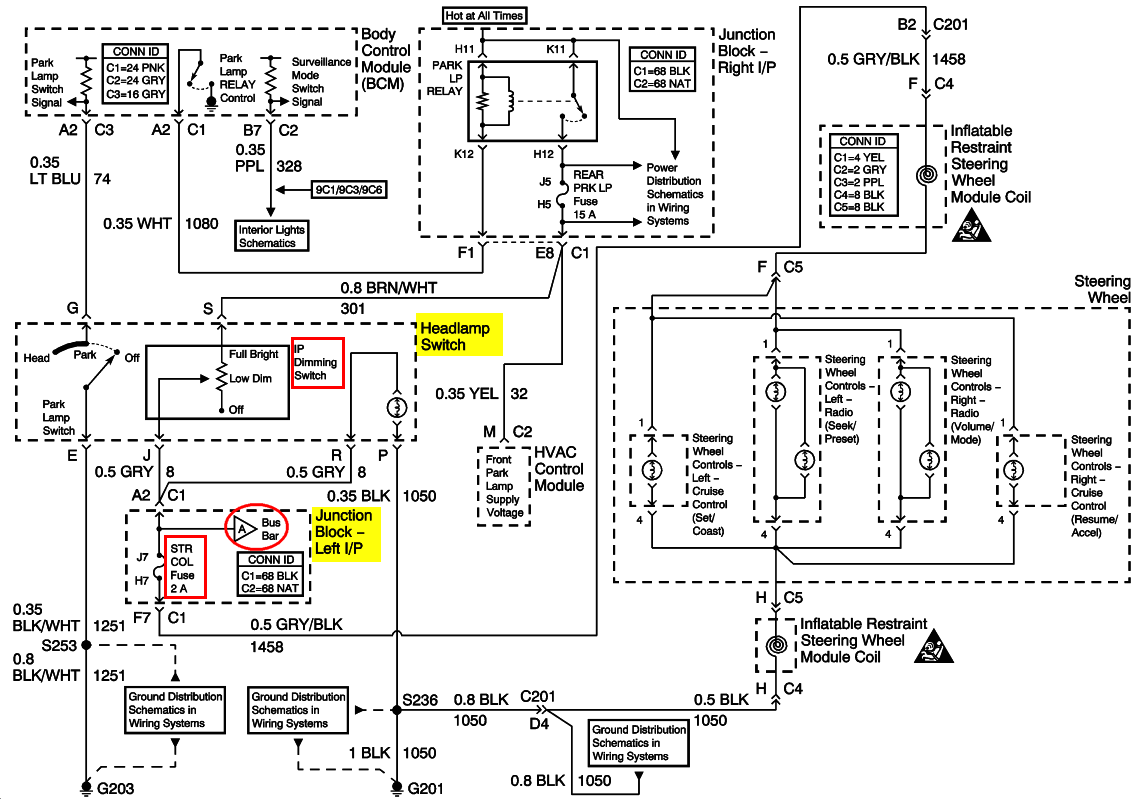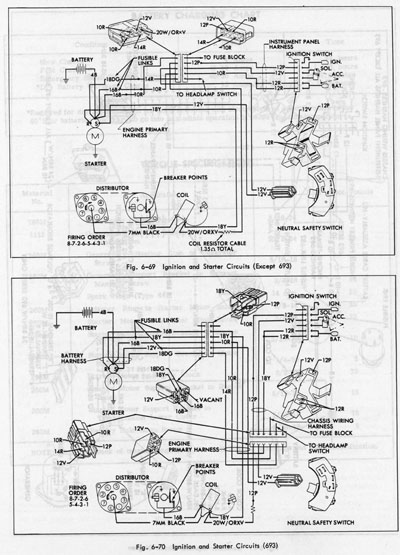
Courtesy Lights

This circuit allows the user to turn off a lamp using a switch located far from the bed, providing sufficient time to lie down before the lamp switches off. Due to its low current consumption, the circuit can be powered directly from a 220Vac mains supply without the need for a transformer. The supply voltage is reduced to 10Vdc using the reactance of capacitor C1, a two-diode rectifier comprising diodes D1 and D2, and a Zener diode D3.
The circuit utilizes a CMOS 555 timer (IC1) configured in a monostable mode, which provides a 15-second on-time determined by resistor R3 and capacitor C4. When switch SW1 is closed, the output from IC1 (pin 3) remains high, activating triac D4, which controls the lamp. When SW1 is opened, the monostable timer is triggered, and after a delay of 15 seconds, the output on pin 3 of IC1 goes low, turning off the lamp.
The circuit design incorporates several key components that work together to achieve the desired functionality. The initial power supply stage employs a capacitor (C1) to reduce the high voltage from the mains supply to a manageable level suitable for the circuit's operation. The rectification stage, consisting of diodes D1 and D2, converts the AC voltage into DC, while the Zener diode (D3) ensures that the voltage remains stable at 10Vdc, protecting the downstream components from overvoltage.
The CMOS 555 timer is a versatile component, widely used in timing applications due to its reliability and ease of use. In this application, it is configured to operate in a monostable mode, where it generates a single output pulse in response to a triggering event—in this case, the closure of switch SW1. The timing interval is determined by the values of R3 and C4, which set the duration of the output pulse to 15 seconds. This allows the user to have sufficient time to get into bed before the lamp turns off.
The triac (D4) serves as a switch for the lamp, allowing it to be controlled by the output of the 555 timer. When the output from the timer is high, the triac is activated, allowing current to flow to the lamp. Once the timer elapses and the output goes low, the triac turns off, cutting power to the lamp.
Overall, this circuit provides a practical solution for conveniently turning off a lamp from a distance, enhancing user comfort and accessibility in a home environment. The integration of low-voltage components with a high-voltage supply demonstrates a common approach in electronic circuit design, where safety and functionality are paramount.This circuit is intended to let the user turn off a lamp by means of a switch placed far from bed, allowing him enough time to lie down before the lamp really switches off. Due to the low current drawing, the circuit can be supplied from 220Vac mains without a transformer. Supply voltage is reduced to 10Vdc by means of C1 reactance, a two diode rectifier cell D1 & D2 and Zener diode D3.
IC1 is a CMos 555 timer wired as a monostable, providing 15 seconds on-time set by R3 & C4. When SW1 is closed, IC1 output (pin 3) is permanently on, driving Triac D4 which in turn feeds the lamp. Opening SW1 operates the monostable and, after 15 seconds, pin 3 of IC1 goes low switching off the lamp.
🔗 External reference
The circuit utilizes a CMOS 555 timer (IC1) configured in a monostable mode, which provides a 15-second on-time determined by resistor R3 and capacitor C4. When switch SW1 is closed, the output from IC1 (pin 3) remains high, activating triac D4, which controls the lamp. When SW1 is opened, the monostable timer is triggered, and after a delay of 15 seconds, the output on pin 3 of IC1 goes low, turning off the lamp.
The circuit design incorporates several key components that work together to achieve the desired functionality. The initial power supply stage employs a capacitor (C1) to reduce the high voltage from the mains supply to a manageable level suitable for the circuit's operation. The rectification stage, consisting of diodes D1 and D2, converts the AC voltage into DC, while the Zener diode (D3) ensures that the voltage remains stable at 10Vdc, protecting the downstream components from overvoltage.
The CMOS 555 timer is a versatile component, widely used in timing applications due to its reliability and ease of use. In this application, it is configured to operate in a monostable mode, where it generates a single output pulse in response to a triggering event—in this case, the closure of switch SW1. The timing interval is determined by the values of R3 and C4, which set the duration of the output pulse to 15 seconds. This allows the user to have sufficient time to get into bed before the lamp turns off.
The triac (D4) serves as a switch for the lamp, allowing it to be controlled by the output of the 555 timer. When the output from the timer is high, the triac is activated, allowing current to flow to the lamp. Once the timer elapses and the output goes low, the triac turns off, cutting power to the lamp.
Overall, this circuit provides a practical solution for conveniently turning off a lamp from a distance, enhancing user comfort and accessibility in a home environment. The integration of low-voltage components with a high-voltage supply demonstrates a common approach in electronic circuit design, where safety and functionality are paramount.This circuit is intended to let the user turn off a lamp by means of a switch placed far from bed, allowing him enough time to lie down before the lamp really switches off. Due to the low current drawing, the circuit can be supplied from 220Vac mains without a transformer. Supply voltage is reduced to 10Vdc by means of C1 reactance, a two diode rectifier cell D1 & D2 and Zener diode D3.
IC1 is a CMos 555 timer wired as a monostable, providing 15 seconds on-time set by R3 & C4. When SW1 is closed, IC1 output (pin 3) is permanently on, driving Triac D4 which in turn feeds the lamp. Opening SW1 operates the monostable and, after 15 seconds, pin 3 of IC1 goes low switching off the lamp.
🔗 External reference





